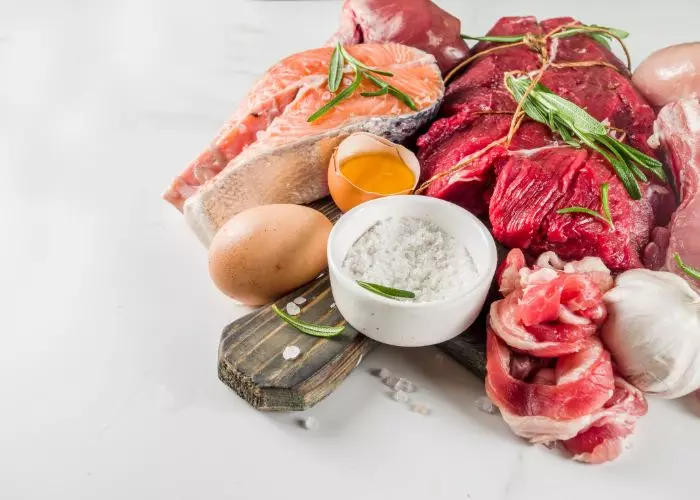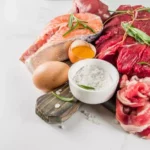Why Is Protein So Expensive? Protein is an essential macronutrient that plays a vital role in building and repairing tissues, supporting immune function, and maintaining overall health. However, many consumers find themselves facing a significant hurdle when it comes to purchasing protein-rich foods: the high cost.
Whether it’s lean meats, dairy products, or plant-based alternatives, protein sources often come with a hefty price tag. Understanding the reasons behind this expense is crucial for individuals striving to maintain a balanced diet while also being mindful of their budget.

Why Is Protein So Expensive?: Production and Processing Costs
The production and processing costs associated with protein-rich foods also contribute to their expensive nature. Raising animals for meat or dairy requires significant resources, including land, water, and feed. Furthermore, animal welfare considerations, such as providing appropriate living conditions and veterinary care, add to the cost.
Similarly, producing plant-based protein alternatives, like soy or pea protein, involves specialized cultivation and processing techniques that can be costly. These expenses include research and development, machinery, labor, and energy consumption. All these factors contribute to the higher price consumers pay for protein-rich foods.

Supply and Demand
One major factor contributing to the high cost of protein is the principle of supply and demand. As the demand for protein-rich foods continues to rise, suppliers struggle to keep up with the pace. Factors like population growth, and trends emphasizing protein intake have led to a surge in demand.
This increased demand puts pressure on the limited supply of protein sources. Seasonal fluctuations, production challenges, and environmental factors affecting agriculture or fisheries can further constrain the availability of protein, driving prices up significantly and making it more expensive for consumers to meet their protein needs.
Transportation and Storage
The logistics involved in transporting and storing protein-rich foods can also drive up their prices. Due to their perishable nature, meat, dairy, and even some plant-based protein products require refrigeration or freezing during transportation and storage to maintain their freshness and safety.
This necessitates specialized equipment and careful monitoring throughout the supply chain, from farm to fork. Long-distance transportation and international trade can further increase expenses due to fuel prices, customs duties, and regulatory compliance. All these costs incurred during transportation contribute to the overall price of protein-rich foods for consumers.

Marketing and Branding
Marketing and branding efforts play a significant role in the pricing of protein-rich foods. Companies invest heavily in advertising, packaging design, and brand promotion to differentiate their products in a competitive market. These expenses include market research, advertising campaigns, endorsements, and maintaining a strong brand image.
The costs associated with marketing and branding are factored into the product’s overall price, making it more expensive for consumers. Additionally, certain brands may choose to position themselves as premium or specialized, catering to niche markets with unique dietary preferences or requirements.

Research and Development
Continual research and development in the field of protein-based foods contribute to their high cost. Developing new production techniques, improving product quality, and introducing innovative formulations require significant investment in research, testing, and regulatory compliance. These costs encompass hiring specialized researchers, conducting experiments and complying with food safety regulations.
Additionally, developing plant-based alternatives or producing protein in a lab through techniques like cellular agriculture involves cutting-edge technologies that are still relatively expensive compared to traditional production methods. These ongoing research and development expenses are eventually reflected in the prices of protein-rich foods, making them more expensive for consumers. Read here also about Why Are Protein Bars So Expensive here.
Frequently Asked Questions
How does supply and demand affect the price of protein?
Increasing demand for protein-rich foods, driven by factors such as population growth and dietary trends, puts pressure on limited supplies. Seasonal fluctuations, production challenges, and environmental factors affecting agriculture or fisheries further restrict the availability of protein, leading to higher prices.
What are the production and processing costs associated with protein-rich foods?
Producing protein-rich foods involves significant resources and expenses. Raising animals for meat or dairy requires land, water, feed, and considerations for animal welfare. Producing plant-based protein alternatives involves specialized cultivation and processing techniques. These costs include research and development, machinery, labor, and energy consumption.
How does transportation and storage impact the cost of protein-rich foods?
Protein-rich foods, especially perishable items like meat and dairy, require refrigeration or freezing during transportation and storage to maintain freshness. This necessitates specialized equipment, energy consumption, and careful monitoring. Long-distance transportation and international trade can further increase expenses due to fuel prices, customs duties, and regulatory compliance.
What role does marketing and branding play in the pricing of protein-rich foods?
Marketing and branding efforts significantly influence the pricing of protein-rich foods. Companies invest in advertising, packaging design, and brand promotion to differentiate their products. These expenses, including market research, campaigns, and maintaining a strong brand image, are factored into the product’s overall price, making it more expensive for consumers.
How does research and development contribute to the high cost of protein-rich foods?
Research and development activities in the field of protein-based foods incur significant costs. Developing new production techniques, improving product quality, and introducing innovative formulations require investment in research, testing, and regulatory compliance. These costs include hiring specialized researchers, conducting experiments, acquiring patents, and complying with food safety regulations.
Conclusión
Protein-rich foods, while essential for a balanced diet, often come with a steep price tag. Factors such as supply and demand dynamics, production and processing costs, transportation and storage logistics, marketing and branding efforts, and research and development expenses all contribute to their high cost.
While the expense may pose a challenge for some individuals, it’s important to prioritize protein intake and explore alternative sources that offer more affordable options. By seeking out seasonal produce or buying in bulk consumers can make informed choices to maintain a healthy and balanced diet without breaking the bank.























